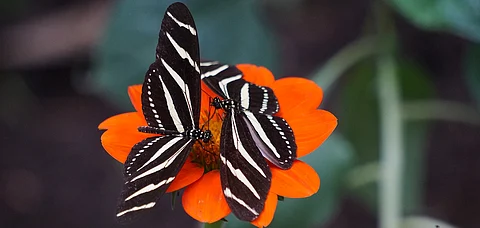
- Destinations
- Experiences
- Stay
- What's new
- Editor’s Picks
- Responsible Tourism
- CampaignsCampaigns
- Subscribe

Butterfly watching is fun, until you come home and start organising the pictures. If you&rsquove just ventured into collecting or studying Lepidoptera (that&rsquos the order moths and butterflies belong to), cataloguing species is an important step. But if it takes too long, it sucks the fun out of this weekend hobby. A new Indian website hopes to make this process a little easier for enthusiasts and experts, so that they may save time, better understand ecology, and accurately add previously unknown species to their portfolio.
Pathanga Suchaka is an online bio-resource portal that uses artificial intelligence to identify up to 800 common butterfly species and 500 moth species in India. Launched in 2019, it follows a simple three-step process &mdash upload the image, select the date and location you was clicked, and click on the &lsquoAnalyze&rsquo button. Within seconds, the website throws up the likeliest matches for your image, complete with a scientific name, a common name and a &lsquoconfidence percentage&rsquo for each suggestion. You can then look up the species online before making your final pick.
The images are identified based on how close your capture is to Pathanga Suchaka&rsquos existing dataset of field images. The AI programme is trained to identify butterflies and moths regardless of their background, but can&rsquot catalogue larvae, pupae or eggs. If there&rsquos multiple butterflies in an image, it goes ahead with a random selection, so do crop as needed. If you see a low confidence percentage, it means the species isn&rsquot part of their trained dataset... yet.
We tested the website&rsquos efficiency with a few random images off the Internet, and the first results were accurate every time except for a little curveball from our end. Alright, it was outright cheating, but we now know how robust the platform is.
It correctly identified the southern birdwing (Troides minos, Karnataka&rsquos state butterfly), the Atlas moth (Attacus atlas, endemic to Asian forests), and the Malabar rose butterfly (Pachliopta pandiyana). But when we put in a foreign species (the high brown fritillary, or Fabriciana adippe) native to the Palearctic region, the correct result showed up as the second option with a low confidence percentage. Probably because we put the location as Delhi
The website was developed by the School of Ecology and Conservation at the University of Agricultural Sciences, Bengaluru. For more information, see pathangasuchaka.in
